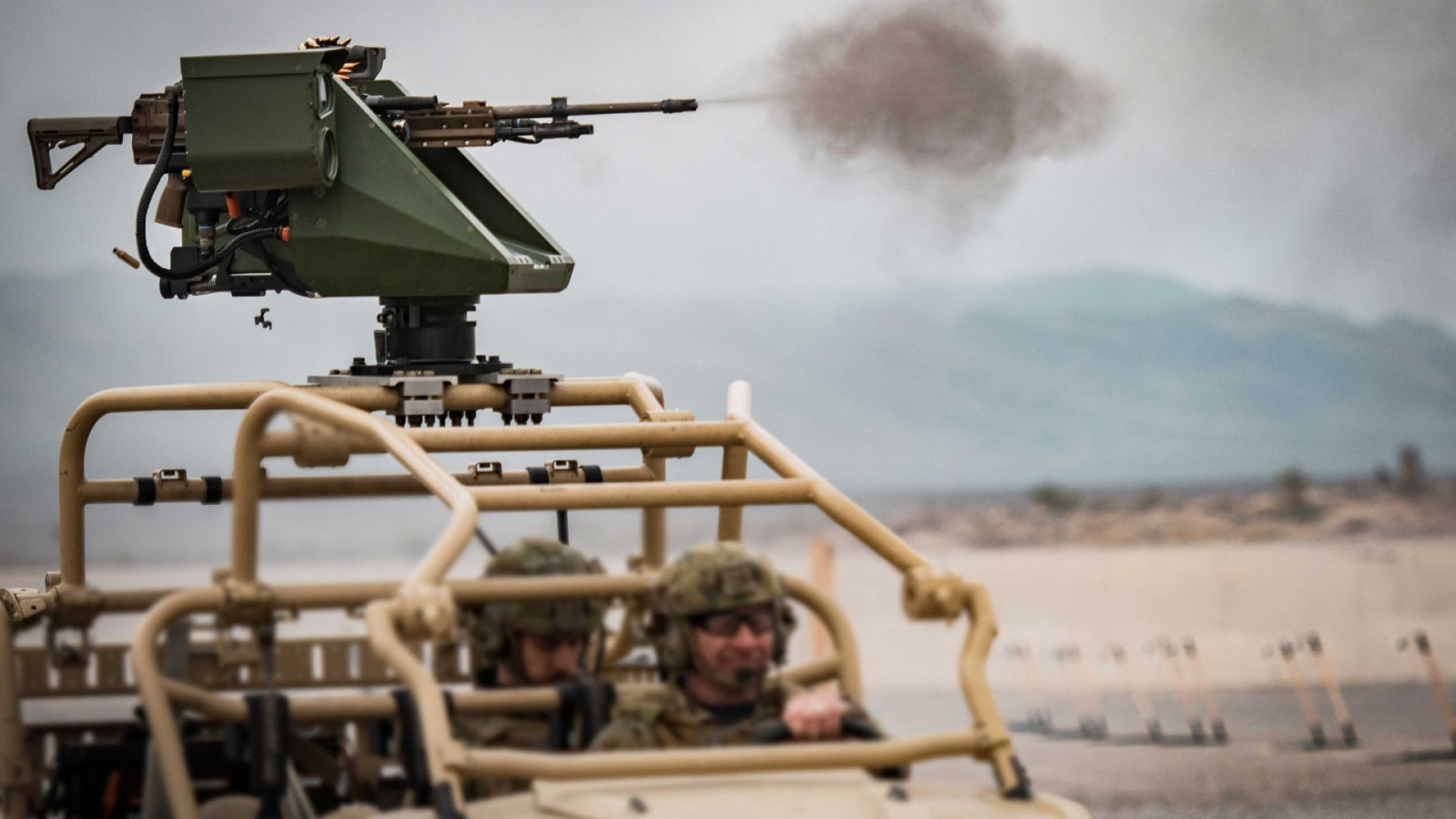Imagine this: a high-tech device capable of stopping an intruder without firing a single bullet or causing fatal harm. This isn't science fiction anymore; it's the reality of sublethal turrets. These advanced systems are revolutionizing security and defense, offering a humane yet effective way to handle threats. In a world where minimizing casualties is crucial, sublethal turrets are becoming indispensable tools for law enforcement, private security, and even military operations.
When you think about turrets, your mind might immediately go to heavy artillery or fully automated weapon systems. But the sublethal turret brings a new dimension to the table. It’s designed to neutralize threats without taking lives, making it perfect for scenarios where lethal force isn’t necessary—or desirable. As technology evolves, so does our approach to safety and security, and these turrets are leading the charge.
Whether you're a tech enthusiast, a security professional, or simply curious about the latest advancements in defense systems, understanding sublethal turrets is key. They represent a significant shift in how we think about protection, blending innovation with ethics to create a safer world. So, buckle up, because we’re diving deep into the world of sublethal turrets—what they are, how they work, and why they matter.
- Gunther Eagleman The Visionary Entrepreneur Redefining Success In The Modern World
- Tennessean Obituary A Heartfelt Journey Through Lifes Final Chapter
Table of Contents
- Introduction to Sublethal Turrets
- A Brief History of Sublethal Technology
- Types of Sublethal Turrets
- How Sublethal Turrets Work
- Applications in Real Life
- Benefits of Sublethal Turrets
- Challenges and Limitations
- The Future of Sublethal Defense
- Ethical Considerations
- Conclusion
Introduction to Sublethal Turrets
Sublethal turrets are essentially advanced security systems designed to incapacitate targets without causing permanent harm or death. They utilize a variety of non-lethal methods, from sound waves and electromagnetic pulses to lasers and kinetic impact rounds. Think of them as the next generation of pepper spray or tasers, but on a much larger and more sophisticated scale.
These systems are often equipped with sensors, cameras, and AI-driven targeting mechanisms, allowing them to operate autonomously or semi-autonomously. The goal? To provide a robust defense solution that keeps people safe while minimizing the risk of fatalities. Sublethal turrets are particularly useful in urban environments, crowded spaces, or situations where traditional weapons might cause collateral damage.
Why Are Sublethal Turrets Important?
Let’s face it—our world is getting more complex by the day. Security threats are evolving, and so are the tools we use to counter them. Sublethal turrets offer a balanced approach to dealing with danger. They allow security personnel and law enforcement to respond quickly and effectively without escalating situations unnecessarily.
- Riley Reed Married The Ultimate Guide To Her Love Life Career And More
- Why Was Jelly Roll Arrested Unpacking The Truth Behind The Headlines
And here’s the kicker: they’re not just for governments or big organizations. Private companies, educational institutions, and even homeowners are starting to explore the potential of sublethal turrets. It’s all about having options when it comes to personal and property protection.
A Brief History of Sublethal Technology
Sublethal turrets didn’t just appear out of nowhere. They’re part of a broader trend toward non-lethal defense technologies that have been developing for decades. From the invention of the taser in the 1970s to modern-day directed energy weapons, humanity has been searching for ways to neutralize threats without going full-on lethal.
One of the earliest examples of sublethal tech was the rubber bullet, which was first used in Northern Ireland during the Troubles. While effective in some cases, rubber bullets had their own set of issues, including inconsistent results and occasional fatalities. Fast forward to today, and we’re seeing far more precise and reliable solutions in the form of sublethal turrets.
Key Milestones in Sublethal Tech Development
- 1970s: Introduction of tasers
- 1990s: Development of acoustic weapons
- 2000s: Emergence of directed energy systems
- 2010s: Rise of autonomous sublethal turrets
Types of Sublethal Turrets
Not all sublethal turrets are created equal. Depending on the intended use case, different types of turrets employ various methods to subdue targets. Here’s a breakdown of the most common types:
1. Acoustic Turrets
These bad boys use sound waves to disorient or incapacitate individuals. They emit high-decibel noises that can cause nausea, dizziness, or even temporary hearing loss. Think of it like a sonic boom aimed directly at the bad guy.
2. Electromagnetic Turrets
Electromagnetic pulses (EMPs) are another popular option. These turrets disrupt electronic devices, rendering them useless. While they don’t physically harm humans, they can disable vehicles, drones, or other tech-based threats.
3. Kinetic Impact Turrets
For situations requiring physical restraint, kinetic impact turrets come into play. These systems fire rounds made of materials like rubber or foam, delivering enough force to stop someone in their tracks without causing serious injury.
How Sublethal Turrets Work
The inner workings of a sublethal turret are as fascinating as they are complex. Most modern turrets rely on a combination of sensors, algorithms, and actuators to function effectively. Here’s a simplified explanation:
First, the turret detects a potential threat using cameras, motion sensors, or thermal imaging. Once identified, the system analyzes the situation to determine the appropriate response. This could involve emitting a warning signal, firing a non-lethal projectile, or deploying another form of deterrent.
Throughout the process, AI plays a crucial role in ensuring accuracy and minimizing the risk of accidental harm. Machine learning algorithms help the turret distinguish between friend and foe, making split-second decisions based on real-time data.
Key Components of a Sublethal Turret
- Sensors: Detect movement, heat, and other indicators of threats
- Processing Unit: Analyzes data and determines the best course of action
- Actuators: Execute commands, such as firing projectiles or emitting sound waves
Applications in Real Life
Sublethal turrets aren’t just theoretical concepts—they’re already being used in a variety of real-world scenarios. From military operations to civilian security, these systems are proving their worth time and time again.
1. Military Use
In combat zones, sublethal turrets can help secure perimeters, protect supply lines, and deter hostile actors without escalating conflicts. For example, the U.S. military has experimented with systems like the Active Denial System, which uses millimeter waves to create a sensation of intense heat on the skin.
2. Law Enforcement
Police forces around the world are increasingly adopting sublethal turrets to handle protests, riots, and other high-risk situations. These systems allow officers to maintain control without resorting to deadly force, reducing the likelihood of casualties.
3. Private Security
Businesses and organizations are also getting in on the action. Sublethal turrets can be installed at entry points, parking lots, or other vulnerable areas to deter intruders and protect assets.
Benefits of Sublethal Turrets
So, what makes sublethal turrets so appealing? Here are just a few of the many advantages:
- Reduced risk of fatalities
- Increased situational awareness through advanced sensors
- Flexibility in handling diverse threat scenarios
- Lower long-term costs compared to traditional defense systems
Plus, they align with modern ethical standards, which prioritize human life and well-being. Who wouldn’t want a system that gets the job done without crossing the line into lethal territory?
Challenges and Limitations
Of course, no technology is perfect, and sublethal turrets are no exception. There are several challenges and limitations to consider:
One major issue is accuracy. While AI improves decision-making, there’s always a risk of misidentifying targets or accidentally harming bystanders. Additionally, sublethal turrets aren’t foolproof—they can be bypassed or neutralized by determined adversaries.
Common Concerns
- Potential for misuse by untrained operators
- Cost of implementation and maintenance
- Public perception and trust issues
The Future of Sublethal Defense
Looking ahead, the future of sublethal turrets looks bright. Advances in AI, robotics, and materials science are paving the way for even more effective and efficient systems. Imagine turrets that can adapt in real-time to changing environments or communicate seamlessly with other security devices.
As these technologies continue to evolve, we can expect to see broader adoption across industries. The key will be balancing innovation with ethical considerations, ensuring that sublethal turrets remain tools for good rather than instruments of harm.
Ethical Considerations
Any discussion of sublethal turrets must include an examination of the ethical implications. While these systems offer many benefits, they also raise important questions about privacy, autonomy, and accountability.
For instance, how do we ensure that sublethal turrets aren’t used to infringe on civil liberties? And who bears responsibility when something goes wrong? These are tough questions that require thoughtful answers from policymakers, technologists, and society as a whole.
Conclusion
Sublethal turrets represent a major leap forward in the field of non-lethal defense. By combining cutting-edge technology with a commitment to human safety, they offer a powerful solution to some of today’s most pressing security challenges.
As we’ve explored in this article, sublethal turrets come in many forms and serve a wide range of purposes. From military applications to private security, their versatility and effectiveness make them indispensable tools for modern times.
But remember, with great power comes great responsibility. As we embrace this technology, we must remain vigilant about its ethical implications and ensure that it’s used responsibly. So, what do you think? Are sublethal turrets the future of defense, or just another gadget in the arsenal? Let us know in the comments below, and don’t forget to share this article with your friends!
- Discover The Sweet Wonders Of The Chocolate Festival Nh
- Most Accurate Pollster Whorsquos Nailing It In The World Of Predictions


